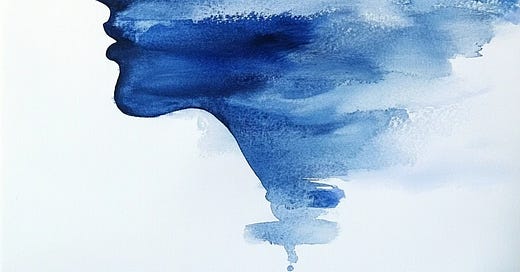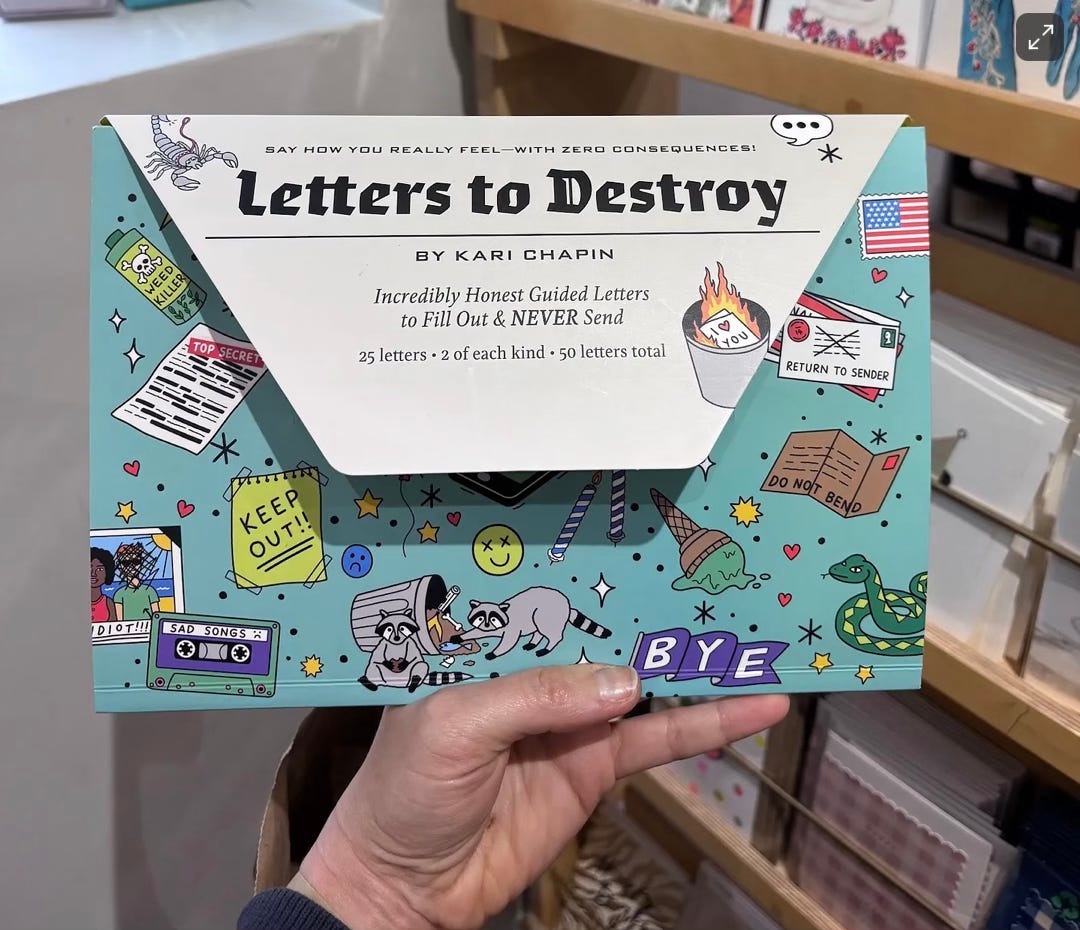London, baby!
Recently, I found myself in London, indulging in one of my favorite pastimes: wandering through a city that isn’t mine, eyes wide open, searching for sparks of inspiration. I stroll aimlessly, observing, until some small detail grabs my attention. An idea takes shape, stretches, and I let myself linger, toying with it like a cat batting at a ball of yarn.
It all started at the M&M’s store, where mugs displayed clever quips like “I’m afraid of what might happen if I relax” or “Flawless? How about more flaws?”—phrases that deftly tease at our emotional insecurities.
Then at Liberty—the temple of chic London shopping. In the stationery section, gratitude journals—those notebooks for jotting down daily moments of gratitude—now share the spotlight with voodoo notebooks and catharsis kits: pages designed to capture your demons in writing, only to be ceremoniously burned afterward.
This wasn’t some obscure little shop—it was Liberty. A place designed for those who have everything yet are still searching. Here, there’s no overplayed feel-good mantra, but rather a different message: feel everything. As if, at the heart of this perfect order, we were finally daring to admit that living means embracing chaos.
Dancing Between the Lines
The demand for well-being has always carried a slightly bitter taste, as if happiness were a duty, a fixed, unyielding goal. But what if we embraced something different? Not negative thinking, which implies an opposite 'positive,' but rather opposite thinking—an approach that transcends binaries altogether.
The world finally seems to be waking up to these nuances.
Interestingly, our cultural works sensed this long before we did. Take animated films, for example. They’ve long since moved beyond their polished innocence. Starting with Aladdin, the Genie, brought to life by the talented and equally complex Robin Williams, was a true revolution: absurd humor blending slapstick for children with layered wit for adults. Then came Inside Out, which dove headfirst into our emotions, showing that joy cannot exist without sadness, and that our inner chaos is a source of richness. Since then, these films have dared to go further. Soul challenges us to reflect on the true meaning of life, rooted in being rather than doing. And Sauvages portrays a teenage girl’s fight against deforestation, a story that probes not only our connection to nature but also the inner conflicts we face as modernity shakes our sense of stability.
Life in Emojis
Our languages, too, are breaking free from their constraints. Take emojis, the true icons of our digital exchanges. Their original mission—to convey simple emotions—feels almost naïve today. There was a time when 😊 was enough to express joy, 😢 sadness, and 😴 boredom.
But this minimalist language couldn’t withstand our creativity. These tiny symbols have become a playground for subtlety and irony. 🍵 no longer just means a cup of tea but now signals juicy gossip. 💀 doesn’t speak of death but rather laughter so intense it "kills": “I’m dead.” ✨, meanwhile, adds a soft yet striking layer of irony to conversations, while ⏳, the hourglass, has taken on a new life, bowing to an enchanting silhouette.
Emojis are no longer static. They evolve, get reinterpreted, and become richer. They capture the complexity of our emotions with a level of expressiveness that words alone often struggle to convey.
Contemporary "Emotiwords"
They, too, evolve, transform, and reinvent themselves.
Yesterday, a reserved person was simply "shy." Today, we say demure, a term rich with nuance, blending modesty with elegance, a restraint imbued with grace. Like emojis, language resists simplicity. It stretches, plays with context, weaves subtext, and strives to capture the infinite complexity of our interactions.
The keywords from Google’s 2024 retrospective reflect this shift. Sigma represents a self-assured solitude, the quiet strength of someone who steps away from the noise. Skibidi, on the other hand, is absurd laughter, a joyous yet desperate cry in the face of a world teetering on chaos.
These are no longer mere words, nor just emotions. They are states of mind, fragments of identity, shards of meaning that together compose life in all its complexity.
It’s as if we’ve shifted from a rainbow of emotions—expansive yet clearly defined—to a holographic rainbow, shimmering with multifaceted reflections. (And by the way, holographic hues are among Pinterest’s top trends for 2025.)
An Identity Challenge
We live in an era of "post-everything": post-truth, post-irony, post-certainty. This prefix doesn’t mark an end but rather an entry into a liminal space where anchors falter and meaning is yet to be built. As machines reach new heights, humanity hesitates: to reinvent itself or risk being lost.
Antonio Gramsci foresaw it: “The old world is dying, and the new world struggles to be born: now is the time of monsters.” We stand at a crossroads, where the critical question arises: who are we, and where are we going?
The revolution is no longer technical; it is narrative. Barthes argued that it is our emotions that shape our beliefs. In a world saturated with manipulated stories, emotion and identity are increasingly eclipsing technology. Yet these very emotions risk becoming data—tools to be controlled and exploited.
Now, more than ever, we need thinkers and poets to illuminate the uncertainty within us and to guard against technological standardization. It’s time to move from STEM (Science, Technology, Engineering, Mathematics) to SEL (Sensitivity, Emotion, Literature)—to cultivate what machines cannot be. For in this increasingly unreal world, one certainty endures: the power to feel, fully. Mixed feelings, perhaps. But isn’t that where true existence begins?
—MD







I think you're really enjoy reading my book, Stop Your Brain from Sabotaging Your Happiness and Success: https://a.co/d/cwyz4RI
And if you ever want to be interviewed for my newsletter https://blog.mindshiftingeducators.org/ which also talks about mindsets and MindShifting, let me know.